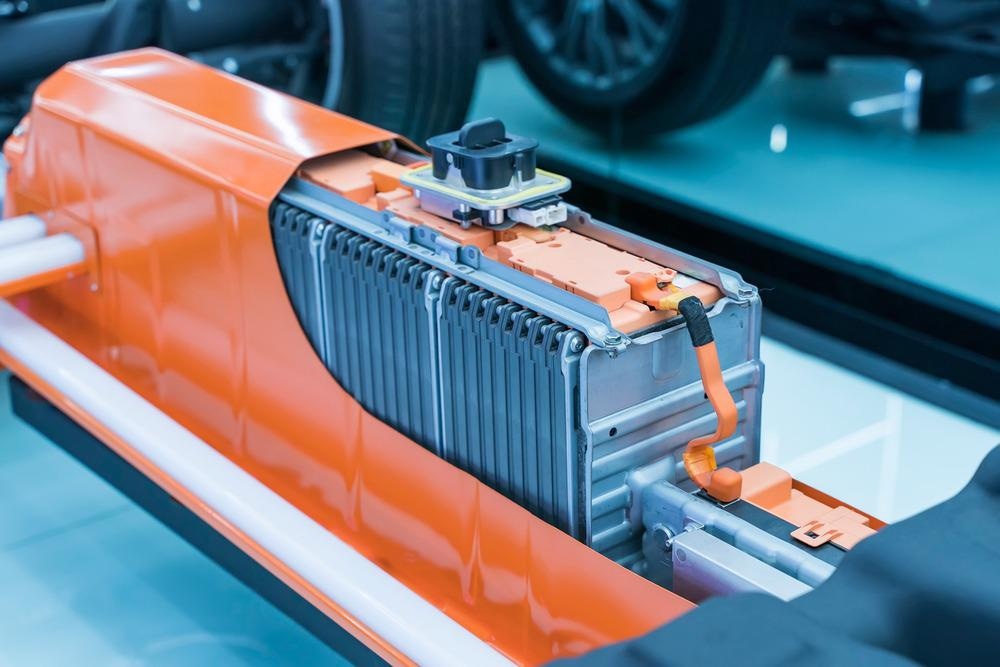A move towards electric vehicles is essential to decarbonizing transport in line with the commitment to reduce and reverse climate change. The adoption of electrified transportation has increased in recent times, driven by regulatory targets, and policy and subsidies from governments keen to meet their environmental targets.

Image Credit: asharkyu/Shutterstock.com
Technological advancements have reduced the cost, but there is still room for improvement. Existing batteries for electric vehicles (EVs) are heavy, expensive, and take a long time to charge. Therefore, research is underway to better current technology and further increase the adoption of EVs.
Current Lithium-Ion Technology
Lithium-based batteries currently dominate the EV market and are used in cars, buses, trucks, and boats.
When charging, positively charged lithium ions are carried in a liquid electrolyte from the positive anode to the negative cathode via a separator. This technology is mature and still heavily invested in, meaning it will hold its position as a major player long into the future.
As good at the technology is, it could benefit from some improvement to ensure it meets the differing performance characteristics of the increasing range of transport options. Tailoring both the battery chemistry and battery design to each application could be key.
Thermal management strategies, modular and cell-to-pack designs, and material light-weighting have an important role in the design of the battery pack, with thermal management playing a key part in the safe operation of Li-ion batteries. Various options are being explored for thermal management, including air, liquid and refrigerant-cooled methods.
New Battery Materials
The most actively researched area of battery technology is the negative electrode, the cathode, specifically the material it is made of. The right material could improve energy density and therefore extend the battery life of the EV. The most promising materials are cobalt and nickel.
There is a trend towards batteries containing high quantities of layered nickel at the cathode resulting in NMC or nickel manganese cobalt oxide cathodes, or nickel cobalt aluminum oxide, NCA. The greater nickel content means more energy storage, increasing the energy density leading to longer battery life and a greater range for EVs.
While such materials have been successfully commercialized by Panasonic and Tesla, they are not suitable for use in all applications. Cobalt is also expensive and its mining is controversial in areas such as the Democratic Republic of Congo where much of the world’s cobalt is located.
Consequently, a cobalt-free Li-ion battery has been developed by researchers from the University of Texas. The cathode features high levels of nickel – around 89% - and doesn’t suffer from the slow charge/discharge normally associated with removing cobalt.
Other cathode materials are under investigation, including lithium iron phosphate or LFP. Interest in LFP has increased significantly in recent years and is already popular for low-cost vehicles and in Chinese e-buses. More research could accelerate further growth.
Solid-State Batteries
Lithium-based solid-state batteries are emerging as a promising alternative; these batteries are expected to hold considerably more energy in the same volume and charge in a fraction of the time of conventional Li-ion batteries.
These batteries use solid-state electrolytes such as ceramics or solid polymers rather than the liquids found in traditional batteries. Using this technology could lead to smaller batteries with higher energy densities, longer lifespans, and a better safety profile.
Solid-state batteries have great potential; US-based QuantumScape has published data that shows lithium-based multilayer cell batteries have the ability to cycle close to 800 times with a 90% capacity retention. We are still awaiting the first commercially available EV powered by solid-state battery technology, but Chinese company Nio is promising a model with this technology by the end of 2022.
Conclusion
There are few credible threats to current Li-ion battery’s dominance; the most likely alternative is lithium-based solid-state battery technology and research in this area is accelerating. However, no other alternative technology has the same level of maturity, nor can it offer sufficient performance to make the technology a viable alternative.
References and Further Reading
Harris, T. (2021) EV battery tech and patenting: a look at the new technologies vying for li-ion’s crown, Current - https://www.current-news.co.uk/blogs/ev-battery-tech-and-patenting-a-look-at-the-new-technologies-vying-for-li-ions-crown. Accessed 1st July 2021.
Holland, A. et al (2021) Lithium-ion Batteries for Electric Vehicles 2021-2031, IDTechEx - https://www.idtechex.com/en/research-report/lithium-ion-batteries-for-electric-vehicles-2021-2031/814. Accessed 1st July 2021.
Levy, N. (2020) New Cobalt-Free Lithium-Ion Battery Reduces Costs Without Sacrificing Performance, UTNews - https://news.utexas.edu/2020/07/14/new-cobalt-free-lithium-ion-battery-reduces-costs-without-sacrificing-performance/. Accessed 1st July 2021.
Hall, C. (2021) Future batteries, coming soon: Charge in seconds, last months and power over the air, Pocket-Lint - https://www.pocket-lint.com/gadgets/news/130380-future-batteries-coming-soon-charge-in-seconds-last-months-and-power-over-the-air. Accessed 1st July 2021.
Disclaimer: The views expressed here are those of the author expressed in their private capacity and do not necessarily represent the views of AZoM.com Limited T/A AZoNetwork the owner and operator of this website. This disclaimer forms part of the Terms and conditions of use of this website.